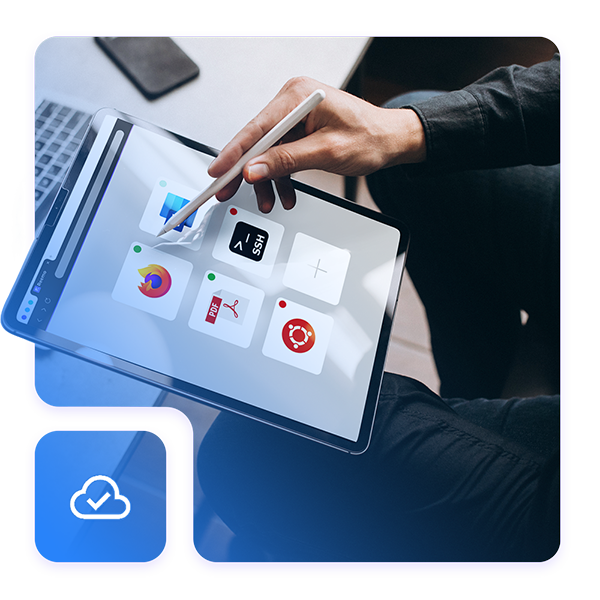How to Secure Your Business Video Conferences?
Google Meet, Webex, Microsoft Teams, Zoom. These names have become the soundtrack of our professional lives. They are the digital arteries through which our ideas, strategies, and secrets flow. The promise? Frictionless productivity, borderless collaboration. The reality? A potential minefield where every click can be a detonation, every session an invitation to prying eyes. While we have fervently embraced remote work or access to cloud applications external to our company, have we collectively lowered our guard? Because let's be clear: securing these exchanges is no longer a box to check on a compliance list, it's the front line of modern cyber warfare. And it's high time to ask ourselves if our armor is up to the caliber of the threats.
Why Video Conference Security Is a Major Issue for Businesses
If you think your last strategic meeting was safe from prying ears, think again. The platforms that unite us are also the ones that expose us. The ease of use, that much-vaunted fluidity, is a boon for hackers.
The Main Risks of Unsecured Video Conferences
The threats are not ghosts. They are real, sophisticated, and potentially devastating to your business.
- The Invisible Ear and the Specter of Industrial Espionage: Imagine your most confidential plans, your manufacturing secrets, broadcast in plain sight to your competitors. This is the number one risk: the pure and simple interception of your audio and video streams, and the documents you thought you were sharing safely.
- "Man-in-the-Middle" or the Art of Digital Puppetry: An attacker slips between you and your interlocutors, reading, modifying, manipulating exchanges. You think you're talking to a colleague, but you're actually talking to a cybercriminal.
- "Zoombombing" and Its Malicious Cousins: Wild intrusion into your meetings. At best, it's an annoying disruption. At worst, it's the dissemination of embarrassing content.
- Silent Exfiltration: Beyond listening, it's the organized looting of your data. Shared documents, login credentials, anything is fair game for a motivated attacker.
- Your Traditional Browser, That Colander: The web client or the video conferencing application itself can be the entry point. One flaw, and it's the royal road for ransomware and other unpleasantness that will take your machine hostage, or even your network.
- The Surprise Guest (and Their Optional Malware): Your partners, customers, suppliers... so many potentially weak links. Their less secure systems can become the Trojan horse of your own infrastructure.
Are Popular Video Conferencing Tools Reliable?
Microsoft, Zoom, Google, Cisco... these titans invest fortunes in the security of their platforms. State-of-the-art encryption, multi-factor authentication, compliance with the most obscure standards, the arsenal is complete. However, believing in total invulnerability is wishful thinking.
- The Past Never Lies (and Neither Does the Present): The history of cybersecurity is a litany of discovered flaws, sometimes exploited with relish by hackers before patches are even deployed.
- Security Is You (and Your System Admin): The finest security features in the world are useless if they are misconfigured or if your employees use "password123" as their password. A disabled waiting room, overly broad sharing permissions, and the door is wide open.
- The Cloud, That Shared Trust Agreement: Your provider secures its infrastructure, its application. But who secures access to that application? Who protects the data that transits through it?
- The Browser, Achilles' Heel of Video Conferencing: This is often where things go wrong. An obsolete browser, riddled with dubious extensions, or already infected, and your video conferencing session, however secure it may be in theory, becomes an easy target. Phishing, malware injection, exploitation of browser flaws themselves... so many opportunities for attackers.
This is where things go wrong. Even the most heavily armored platform can be bypassed if the access point – your browser – is a sieve.
What Are the Best Practices for Securing Video Conferences?
So, what do we do? Go back to Minitel? Not really. It's about moving from superficial security to a true in-depth defense strategy
Choosing a Secure Video Conferencing Tool
Before we talk about cutting-edge technologies, let's make sure the basics are solid.
- Choose Your Solution (and Configure It Well):
- End-to-End Encryption. Demand it.
- Multi-Factor Authentication (MFA) is Not an Option. It's an obligation. A password alone is like leaving the key under the doormat.
- Control Your Meeting: Waiting rooms, strong passwords, strict control of participants (muting microphones, only letting in authorized guests), fine-grained management of screen and file sharing.
- Update! Video conferencing clients, browsers... every unmade update is an open door for hackers.
Implementing a Strict Security Policy
- The Law Is You: Internal Policies and Strong Awareness:
- Who Does What and How: Define clear rules. Who creates the meetings? Who invites? How are links shared?
- Humans, the Weak Link (Who Must Be Trained to Become the Strong Link): Train your teams. Again and again. Don't click on just anything, verify the identity of participants, lock sessions, use strong passwords.
- Recordings: Archives or Time Bombs? Who records? Where? For how long? Who has access? Questions that deserve clear and secure answers.
Integrating Video Conferencing Into a Zero Trust Architecture
The concept that blows up old perimeter fortresses. The principle: "Never trust, always verify." Every access, every request, whether it comes from inside or outside, is suspect by default and must prove its legitimacy.
- Explicit verification, least privilege (only the bare minimum), and micro-segmentation (if one area is hit, the rest of the bastion holds firm).
- Access is conditioned. You only have access to what you need.
RBI, or Complete Isolation of Your Internal Browsing
Let's go back to our Achilles' heel: the browser. If that's where the danger comes from, why not isolate it completely? That's the bet of Isolated Internet Surfing (Remote Browser Isolation - RBI).
- The Principle: Isolate the Danger. Your browsing, including access to your video conferencing platform, no longer happens on your machine. It is executed on a remote server, in a secure container. You, on your workstation, only receive a video stream of that session. It's like watching TV: you see the action, but it's not happening in your living room.
- How It Works:
- Total Isolation: All potentially malicious code (malware, phishing scripts, exploits) remains trapped in this remote sandbox. Your machine remains immaculate.
- Ephemeral Sessions: Each browsing session is ephemeral. Once finished, the container self-destructs, taking with it any trace of activity or threat.
- Blocking Downloads or Right-Clicks: It is possible to block problematic actions such as downloads or right-clicks.
- And for Video Conferences?
- Goodbye Malware and Ransomware: A malicious link in the chat? A stealth download? The malicious code runs "over there," far from you.
- Zero-Days etc... They are stopped dead by the remote container, which will disappear anyway.
- File Sharing in Quarantine: Everything passes through the processing zone and its controls.
RBI is a bit like the "Fight Club" of browsing: what happens in the remote browser stays in the remote browser. And that changes everything.
Comparison of Video Conferencing Tools: What Are Their Security Flaws?
Even the best video conferencing solutions have their weaknesses. Browser access is often their common weak point.
- Microsoft Teams: The Redmond giant is not immune to phishing via chat or malware disguised as shared files. XSS flaws have also reared their heads. And let's not forget the risks associated with countless third-party integrations.
- Zoom: Its meteoric rise has been accompanied by a few cold sweats: "Zoombombing," a bit too zealous data sharing with Facebook, and an initial encryption that made experts cough. Some crucial security options were not always enabled by default for free accounts, leaving the door ajar.
- Slack (for Conferences and Calls): This collaborative messaging offers calls, but without native end-to-end encryption, it's a bit like discussing state secrets in a train station concourse. APIs and third-party integrations are also a significant attack surface.
Faced with this observation, a browser isolation solution acts as a universal protective helmet: it intercepts and executes web content in a secure environment, remotely from your device. Whatever the platform, if you access it via the web, isolation significantly reduces the risk of compromise.
Advanced Solutions to Secure Your Video Conferences
The era of remote collaboration is here to stay. And with it comes the imperative need to strengthen our communications. Relying solely on the marketing promises of platforms is no longer enough. We need a strategy. A real one. One that combines the rigor of internal policies, the vigilance of users, and the intelligence of modern security architectures like Zero Trust.
And at the heart of this new paradigm, there is this simple but revolutionary idea: if the web is dangerous, then don't go there directly. Let an isolation technology secure it for you. Isolated Internet Browsing (RBI) is not a gimmick. It's a pragmatic and powerful response to an omnipresent threat. By virtualizing and confining browsing activity, it nips malware, phishing, and zero-day exploits in the bud.
This is no longer science fiction. Market players are already offering robust RBI solutions, designed to integrate seamlessly with your existing tools. The goal? To make high security transparent for the user. Companies like Reemo, for example, are working to encapsulate this advanced protection around the platforms and applications that your teams use daily – Google Meet, Webex, Teams, Zoom – transforming what could be a constraint into an invisible but formidably effective shield. Because in the end, the best security is the one that protects you without you having to think about it. And in the digital landscape of video conferencing, that's precisely what we all need.


.png?width=50&name=Design%20sans%20titre%20(1).png)

